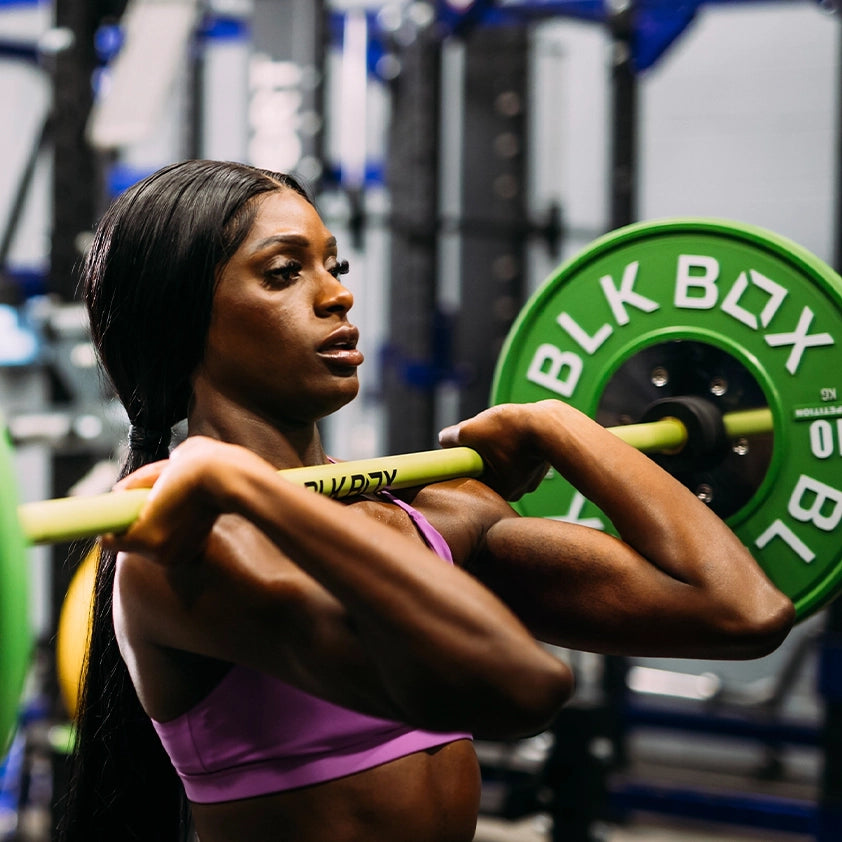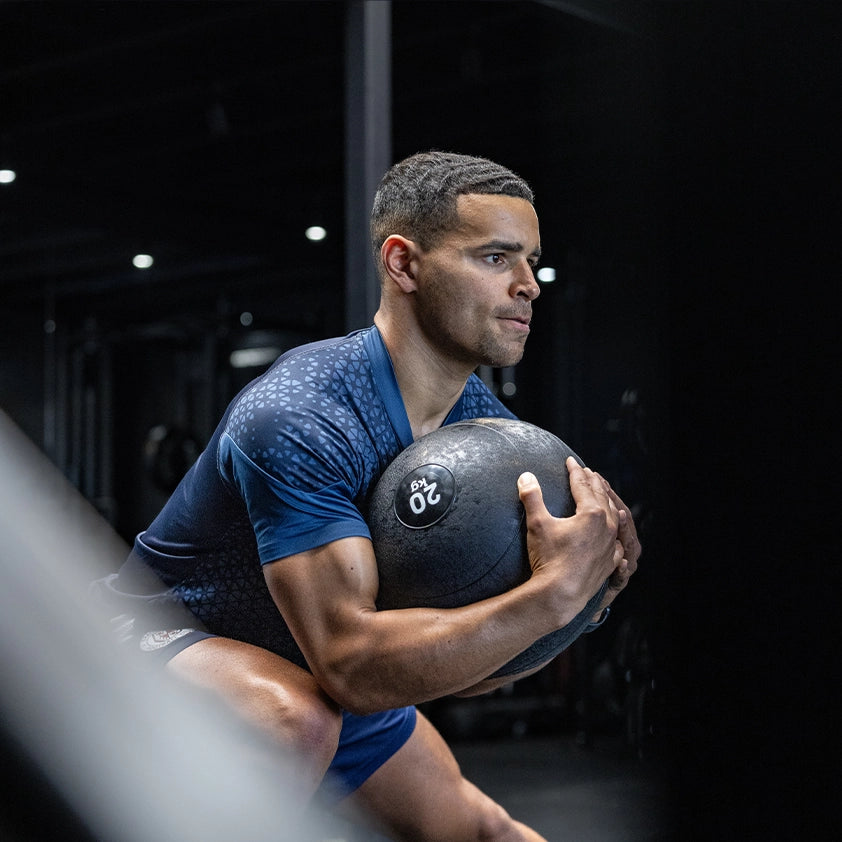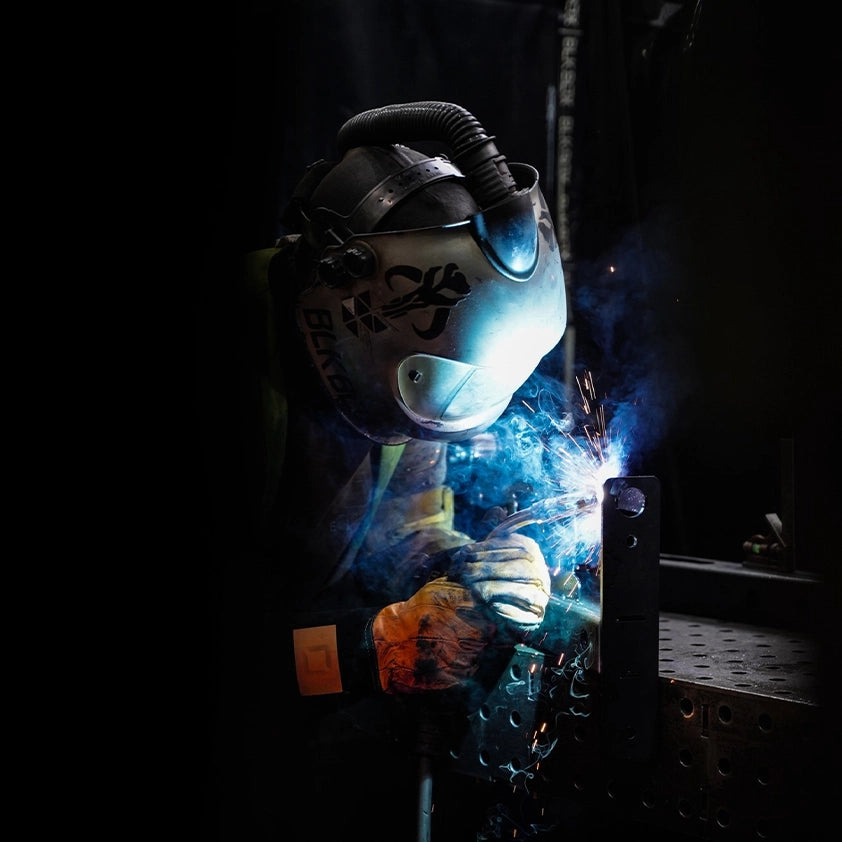Olympic Barbell Buying Guide
Whether you're a seasoned lifter or just starting out, choosing the right barbell can make a world of difference in your strength training journey.
This comprehensive guide will help you understand everything you need to know about selecting the perfect Olympic barbell for your specific needs.

What is an Olympic barbell?
An Olympic barbell is a standardised strength training bar designed to meet International Weightlifting Federation (IWF) specifications. These bars are essential equipment for weightlifting, powerlifting, CrossFit, and general strength training. A standard Olympic barbell weighs 20kg (44lbs) for men and 15kg (33lbs) for women.
Key features to consider when buying an Olympic barbell
1. Bar construction and materials
- Steel quality: Look for barbells made from high-strength steel (around 190,000 PSI tensile strength)
- Shaft diameter: Standard 28-29mm for men's bars, 25mm for women's bars
- Overall length: Typically 2.2 metres (7.2 feet)
- Weight capacity: Ranges from 225kg to 680+kg depending on construction
2. Knurling patterns and grip
- Centre knurl: Essential for back squats, optional for other lifts
- Knurl marks: IWF and IPF marking options for proper hand placement
- Knurl aggressiveness: Options from passive to aggressive based on lifting style
- Grip section: Usually 1.37 metres between sleeve collars
3. Bar performance characteristics
Whip and flexibility
- High whip: Ideal for Olympic weightlifting
- Medium whip: Suitable for CrossFit and general training
- Low whip: Preferred for powerlifting
Sleeve rotation
- Bearing system: Smooth, fast rotation for Olympic lifts
- Bushing system: More durable, ideal for powerlifting
- Hybrid systems: Balance of performance and durability
4. Finish and coating options
- Bare steel: Best feel, requires more maintenance
- Chrome: Good durability, moderate price
- Cerakote: Superior corrosion resistance, customisable colours
- Zinc: Budget-friendly protection
- Stainless Steel: Premium option, excellent corrosion resistance
Barbell types for different training goals
Olympic weightlifting
- More whip for dynamic lifts
- Bearing rotation system
- 28mm shaft diameter
- Moderate knurling
Powerlifting
- Stiffer shaft
- Aggressive knurling
- Centre knurl
- Bushing rotation system
CrossFit/Functional fitness
- Moderate whip
- Multi-purpose design
- Hybrid bearing/bushing system
- Corrosion-resistant finish
General purpose training
- Medium knurl
- Bushing system
- Versatile performance
- Durable finish
Maintenance and care tips
-
Regular Cleaning
- Brush after each use
- Weekly deep cleaning
- Remove chalk buildup
-
Storage
- Store horizontally on a rack
- Avoid constant humidity
- Keep away from moisture
-
Preventive maintenance
- Regular inspection of sleeves
- Check for bearing/bushing wear
- Apply oil as needed
Budget considerations
Entry-level (£150-300)
- Basic construction
- Suitable for beginners
- Limited warranty
Mid-range (£300-600)
- Better performance
- More durability
- Extended warranty
Premium (£600+)
- Competition-grade
- Lifetime warranty
- Superior construction
Making your final decision
Consider these factors when making your purchase:
- Primary type of training
- Training environment (home/commercial gym)
- Budget constraints
- Warranty coverage
- Manufacturer reputation
- User reviews and experiences
Safety and usage guidelines
- Always inspect the barbell before use
- Use proper collars to secure weights
- Follow proper lifting technique
- Clean and maintain regularly
- Store appropriately after use
Frequently Asked Questions
What is the difference between an Olympic barbell and a standard barbell?
Olympic barbells have rotating sleeves, standardised dimensions, and higher weight capacities compared to standard barbells.
How long should an Olympic barbell last?
With proper care and maintenance, a quality Olympic barbell can last 10+ years of regular use.
Can I use an Olympic barbell for all types of lifting?
Yes, but specific types are optimised for certain lifting styles. Choose based on your primary training focus.
How often should I maintain my barbell?
Basic cleaning after each use, with deeper maintenance weekly or monthly depending on usage frequency.
How to use an Olympic barbell

- Warm-up: Prepare your muscles with dynamic stretches.
- Load weight: Choose appropriate weight plates and secure them on the barbell.
- Perform exercises: Squats, deadlifts, bench press, overhead press, rows.
- Safety: Use collars and maintain proper form.
- Cooldown: Stretch after your workout.
- Clean up: Remove weights and wipe down the barbell.















